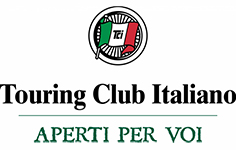About Us
The university museum of anthropological,
medical and forensic sciences for human rights
MUSA
The MISSION of MUSA (University Museum of Anthropological, Medical and Forensic Sciences for Human Rights) is to disseminate the role and importance of medical, anthropological and forensic sciences in contrasting violence and protecting human rights.
The disciplines at the heart of MUSA are those concerned with the study of the human body in all its forms, to reconstruct the past, remote or recent, through the examination of the cadaver, the skeleton, but also of the living.
Under the lens of science, bruises on a body reveal the abuse on a child, bones give back an identity to a body without a name, gunshot residues and fibres reconstruct the dynamics of a murder.
With these disciplines not only can we protect today’s victims and take preventive action, but also help administer justice and reconstruct who we were in ancient times, to better understand the trajectory of social phenomena such as violence and discrimination.
LABANOF is the laboratory of forensic anthropology and odontology of the university of Milan (la Statale), founded in 1995 by the then senior professor Marco Grandi and Professor Cristina Cattaneo. From Labanof, the Labanof Anthropology Collection (CAL) was born. Labanof's mission is identified in teaching, research, professional services and public engagement with regard to the role of anthropology, medicine, archaeology and forensic sciences in the restitution of identity and the interpretation of signs of violence and crime, whether on ancient or recent human remains or living individuals. For these activities of reconstructing the recent or distant past from a body or skeleton, the fields of application of Labanof are mainly criminalistic or judicial, humanitarian, historical or archaeological.
Learn about LABANOF +In December 2017, the University of Milan through LABANOF created CAL (Labanof Anthropological Collection), a museum collection of more than 10,000 skeletons including archaeological and contemporary remains, in order to be able to create the skeletal heritage of Lombardy and make it available to researchers and the public. In February 2018, the collection received recognition as a Museum Collection from the Lombardy Region (D.g.r. February 26, 2018 - no. X/7892). CAL exists thanks to a 20-year collaboration between the Soprintendenze Archeologia Belle Arti e Paesaggio of Lombardy, the municipality of Milan and the University of Milan. Today it is one of the largest skeletal collections in the world.
Scopri la CAL+MUSA, born from LABANOF and CAL, brings to the public for the first time the role of science in combating violence and protecting human rights.
The museum was also born thanks to the sharing of mission and goals between the University of Milan, Fondazione Cariplo, Fondazione Isacchi Samaja Onlus and Terre des Hommes.
